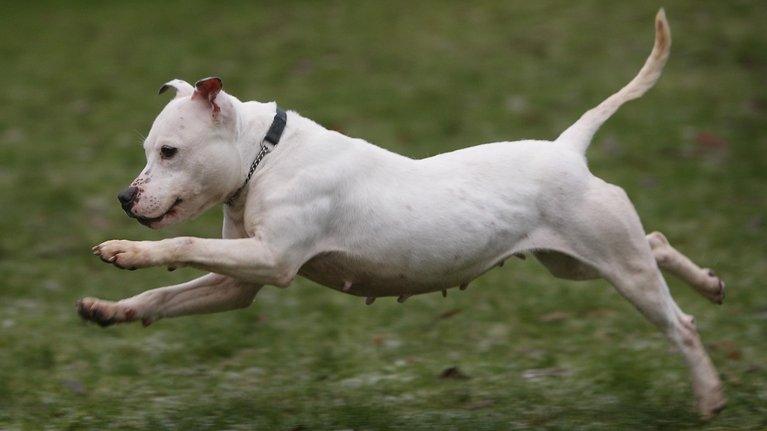Staffordshire bull terriers: A question of class?
- Published
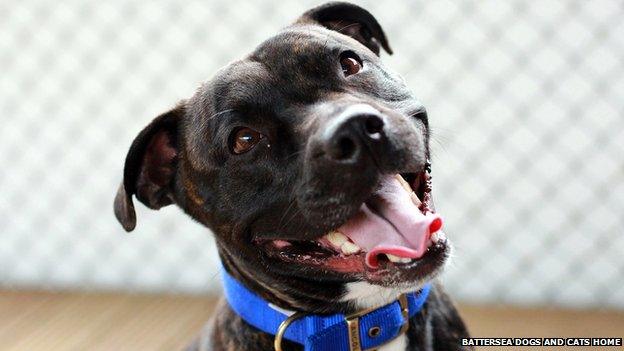
Are Staffies really canine villains or is it a case of mistaken identity?
Research by BBC News shows Staffordshire bull terriers are the third most popular dog in the UK. But why are they considered by some as the "chav dog" of choice and what does this tell us about British attitudes to class?
Bred originally as fighting dogs, the reputation of the Staffordshire bull terrier often precedes it. And when the BBC's Dog Map appeared on 18 January, a fierce debate broke out on social media, external.
Painted by many as aggressive, vicious and worthy of a place on the "dangerous dogs" list, every negative view was in turn met by a barrage of positive praise citing the breed's loyalty and affectionate character.
"No surprise to see Staffies popular in big cities where gangs of chavs live and people use them to guard homes," said one user.
"The usual brush is tarring the Staffy," said another. "I'm not a chav and neither are the good people I know that also own Staffs."
So why do the dogs have such a negative reputation? And why do we judge in the first place?
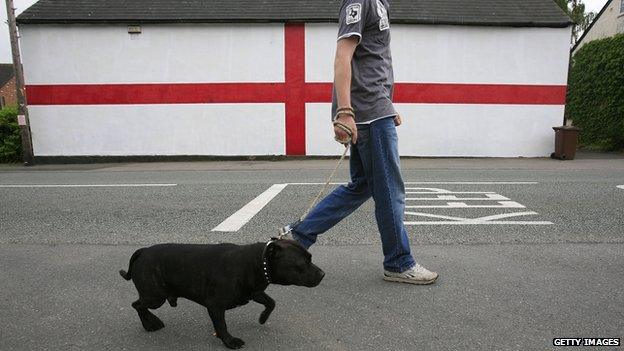
Staffordshire bull terriers are often associated with specific social groups
"They're one of those breeds that has a negative stigma attached to them and one of those is around 'chav culture'," said Dr Thomas Fletcher, a senior lecturer at Leeds Beckett University.
"You hear stories about dangerous dogs and [people] being mauled and a pattern emerges about the type of breed that's [involved].
"Staffies do have a particularly bad reputation, but it is important to recognise that those we hear about represent the minority of the breed. I think it's as much to do with the owner. Animals are individuals and I think it's very much about nurture over nature."
Dr Fletcher recently completed a study with dog-walkers about the relationships between humans and animals.

Staffordshire bull terrier facts
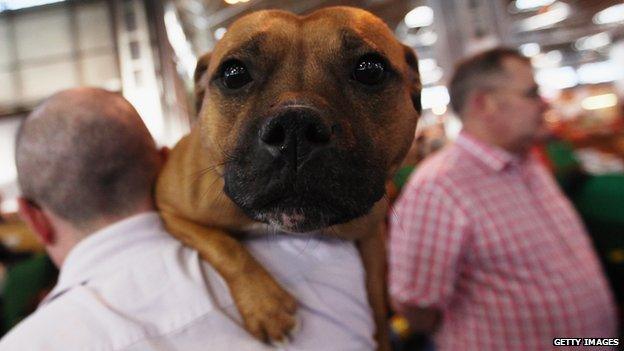
Experts say Staffies are naturally affectionate and loyal
Staffordshire bull terriers were bred in 19th Century Britain as fighting dogs
The breed shares common ancestors with the bulldog, the American Staffordshire terrier, the American pit bull terrier, and the bull terrier
It was probably developed by crossing the bulldog with an ancestor of the Manchester terrier
The Staffordshire bull terrier was recognised as a breed in 1935
Its temperament is described as affectionate, loyal and good with children
The average cost of a pure-bred puppy registered with the Kennel Club is £500 to £600

"The majority of coverage of Staffies represents them as the dog of choice among certain groups - white working class youths - or 'chavs' - being one of those," adds Dr Fletcher.
"Rarely are Staffies portrayed in a domestic setting - i.e., in 'normal' family life.
"Staffies come with a degree of baggage in that respect as they have emerged as a modern-day folk devil. Their reputation then may demarcate boundaries between social groups. Again, these boundaries may be defined along class lines.
"But equally there are dogs that can be a marker of other [traits], like sexuality.
"It comes down to social norms and the expectations - who should be walking the dog and what we associate with certain people, than the breed itself.
"If a gang turned up with a dachshund it wouldn't have the same impact."
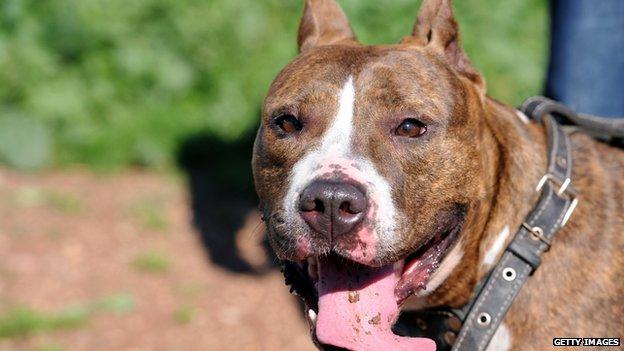
Pit bull terriers are a banned breed and are often confused with Staffies
Elvira Meucci, campaigns director for the Dogs Trust, said dog choice and image extended beyond Staffies and "chav culture".
"There's no doubt that you're saying something about your personality [with your dog]," she said.
"Staffordshire bull terriers are powerful-looking dogs and therefore they can be used to portray their owners as strong and macho, just as a Chihuahua is the choice of girls who want to look trendy.
"If you look back at how dogs have been used, it does change. [At one time] it was Dobermans, because they're big and powerful dogs and that makes a statement."
Staffordshire bull terriers are not banned under the Dangerous Dogs Act, but are often confused with banned breeds like pit bulls, Ms Meucci added.
That being said, Staffies have made headlines for aggressive acts.
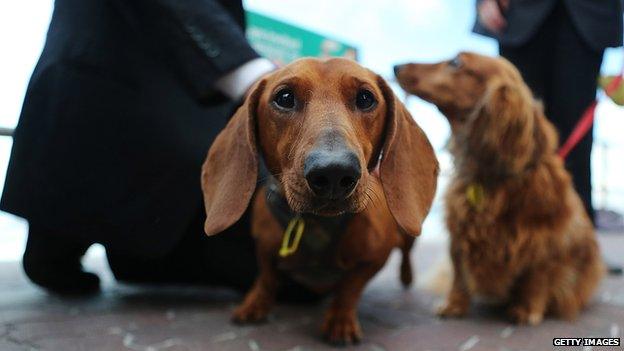
A gang turning up with a dachshund wouldn't have the same impact as a tough-looking Staffie
In 2011 a girl's pet Chihuahua was mauled to death by four Staffies while a dog owner was given a suspended sentenced in 2013 after his dog decapitated another dog.
The same year, teenager Jade Anderson was killed after she was attacked by four dogs in Greater Manchester, two of which were Staffordshire bull terriers. But Coroner Alan Walsh told her inquest the problem was not specific breeds, but the control of dogs in general.
According to microchipping data, 356,000 Staffies have been tagged in the past decade by pet registration companies. The statistics perhaps fly in the face of concerns that Staffies should be given a wide berth.
But being the dog de jour is a double-edged sword, with over-breeding, a saturated market and owners who do not commit long term contributing to the number of Staffies ending up in shelters.
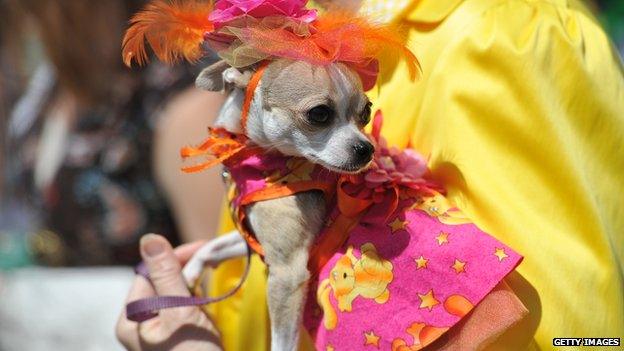
Does your dog reflect your personality?
In 2013 more than a third of the dogs that came through the doors of Battersea Dogs and Cats Home were Staffordshire bull terriers.
Bill Lambert, from the Kennel Club, said Staffies are not naturally aggressive and were one of the only breeds it recommended as suitable around children.
"We have seen enormous growth in the popularity of Staffordshire bull terriers in the last 20 years and there's no doubt that some of that has come about because of an increase in status dogs," he said.
"However, the fact is that they're a dog that doesn't deserve the image it's been given. They need a lot of socialising when they're puppies, but that's down to the owners.
"Any dog can be trained to be a bad dog, just as they can trained to be a good dog."
- Published18 January 2015
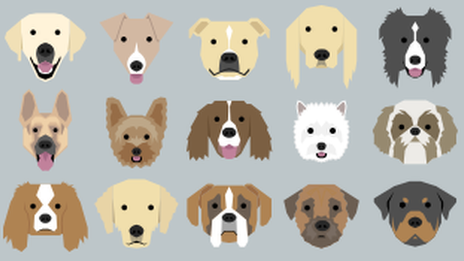
- Published21 April 2013

- Published29 March 2013
